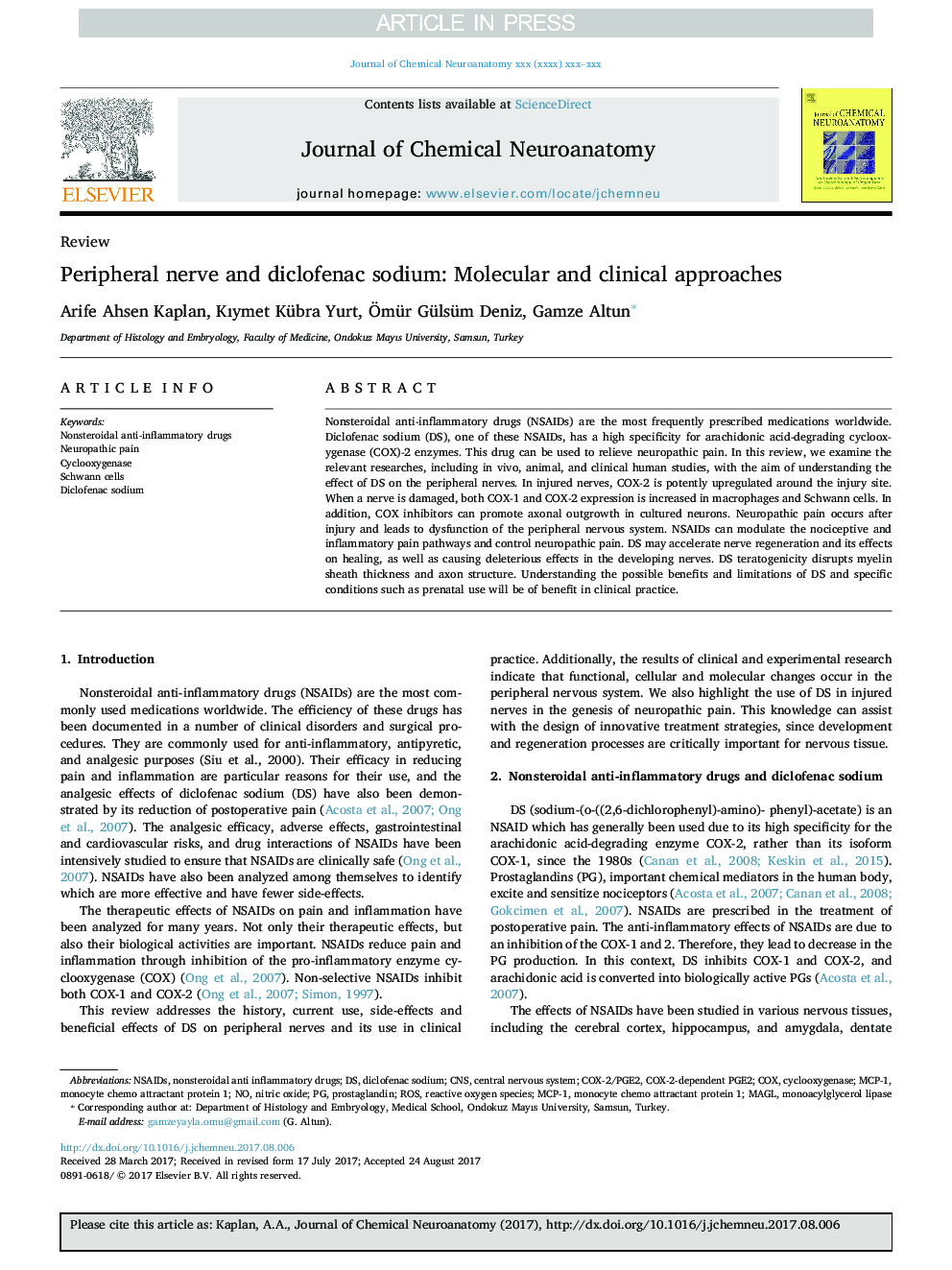| کد مقاله | کد نشریه | سال انتشار | مقاله انگلیسی | نسخه تمام متن |
|---|---|---|---|---|
| 8336179 | 1540436 | 2018 | 10 صفحه PDF | دانلود رایگان |
عنوان انگلیسی مقاله ISI
Peripheral nerve and diclofenac sodium: Molecular and clinical approaches
ترجمه فارسی عنوان
عصب محیطی و دیکلوفناک سدیم: روش های مولکولی و بالینی
دانلود مقاله + سفارش ترجمه
دانلود مقاله ISI انگلیسی
رایگان برای ایرانیان
کلمات کلیدی
موضوعات مرتبط
علوم زیستی و بیوفناوری
بیوشیمی، ژنتیک و زیست شناسی مولکولی
زیست شیمی
چکیده انگلیسی
Nonsteroidal anti-inflammatory drugs (NSAIDs) are the most frequently prescribed medications worldwide. Diclofenac sodium (DS), one of these NSAIDs, has a high specificity for arachidonic acid-degrading cyclooxygenase (COX)-2 enzymes. This drug can be used to relieve neuropathic pain. In this review, we examine the relevant researches, including in vivo, animal, and clinical human studies, with the aim of understanding the effect of DS on the peripheral nerves. In injured nerves, COX-2 is potently upregulated around the injury site. When a nerve is damaged, both COX-1 and COX-2 expression is increased in macrophages and Schwann cells. In addition, COX inhibitors can promote axonal outgrowth in cultured neurons. Neuropathic pain occurs after injury and leads to dysfunction of the peripheral nervous system. NSAIDs can modulate the nociceptive and inflammatory pain pathways and control neuropathic pain. DS may accelerate nerve regeneration and its effects on healing, as well as causing deleterious effects in the developing nerves. DS teratogenicity disrupts myelin sheath thickness and axon structure. Understanding the possible benefits and limitations of DS and specific conditions such as prenatal use will be of benefit in clinical practice.
ناشر
Database: Elsevier - ScienceDirect (ساینس دایرکت)
Journal: Journal of Chemical Neuroanatomy - Volume 87, January 2018, Pages 2-11
Journal: Journal of Chemical Neuroanatomy - Volume 87, January 2018, Pages 2-11
نویسندگان
Arife Ahsen Kaplan, Kıymet Kübra Yurt, Ãmür Gülsüm Deniz, Gamze Altun,
